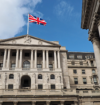The U.K.’s inflation rate edged higher in July, defying expectations, according to the latest data from the Office for National Statistics (ONS). Despite a surprising drop in consumer prices, the annual inflation rate climbed to 2.2% in July, up from 2.0% in June, marking the highest level since April.
Consumer prices in the U.K. fell by 0.2% in July, a significant shift from the 0.1% increase recorded in June. This decline in monthly prices represents the best performance since January when prices also dipped into negative territory. However, the drop in consumer prices wasn’t enough to offset the upward pressure on the annual inflation rate.
The most significant contributor to the rise in the annual inflation rate came from the housing and household services sector. Prices for gas and electricity fell in July, but the decline was less pronounced than during the same period last year, leading to a net increase in the inflation rate.
Core inflation, which excludes volatile items like energy and food, showed a modest increase of just 0.1% in July, down from the 0.2% rise seen in June. This marks the best monthly performance since January. Year-over-year, however, core inflation slowed to 3.3% in July, down slightly from 3.4% in June, reaching its lowest level since September 2021.
The unexpected rise in the annual inflation rate, despite the drop in consumer prices, adds complexity to the U.K.’s economic outlook. While the slowdown in core inflation might offer some relief, the overall inflation trend suggests that price pressures remain a concern, particularly in the housing and household services sectors. The Bank of England will likely monitor these developments closely as it navigates its monetary policy in the coming months.



